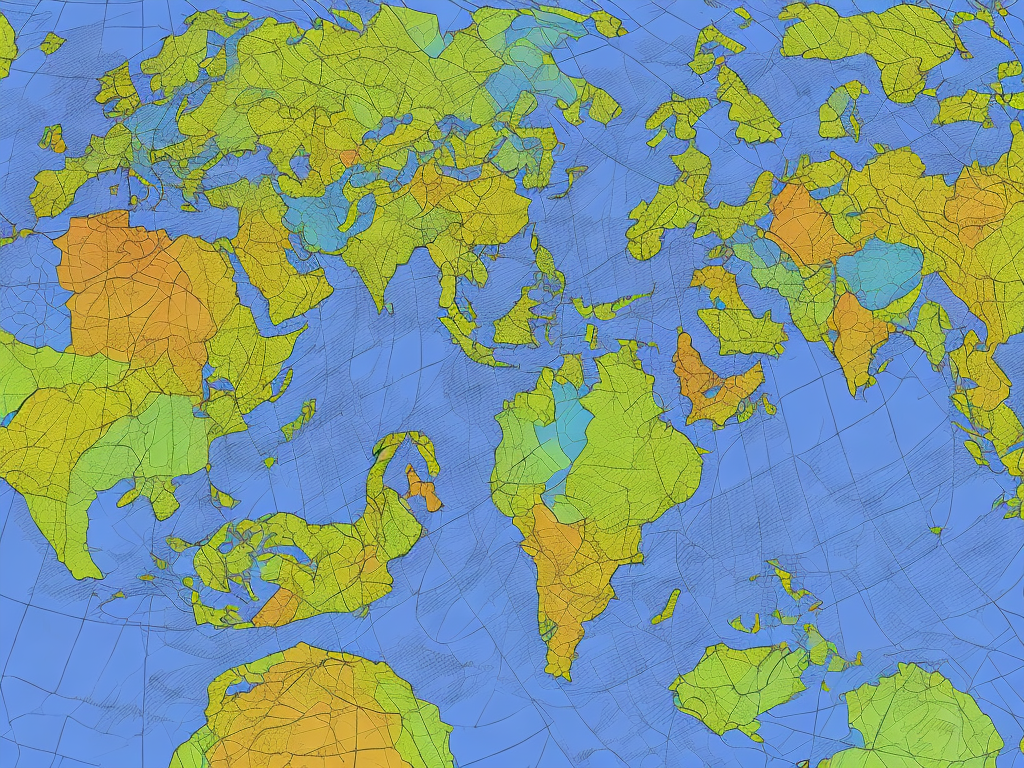
The Difference Between State and Territory
In the context of governance and administration, states and territories play a significant role in many countries. However, the terms state and territory are often used interchangeably, leading to confusion among many individuals. While both states and territories are political subdivisions, they possess distinct characteristics that differentiate them from each other. In this article, we will explore the difference between a state and a territory, taking into account various aspects such as governance, autonomy, and representation.
To begin with, it is important to define what a state and a territory are. Generally, a state refers to a political unit that has its own government, which exercises jurisdiction over a defined territory and its inhabitants. States have considerable autonomy and possess certain powers such as authority over legislation, taxation, and the establishment of governmental institutions. The United States, Australia, Germany, and India are examples of countries that consist of multiple states.
On the other hand, a territory refers to a region that is under the jurisdiction and control of a larger political entity. Territories do not exercise the same level of sovereignty and autonomy as states. Instead, they are governed by a central authority and are often subject to the laws and decisions made by the governing body of the larger political entity. Territories are usually established to administer regions that are not yet ready or qualified for statehood. They serve as a transitional phase towards achieving statehood, allowing the central government to gradually devolve certain powers and responsibilities to the territory.
One of the fundamental differences between a state and a territory lies in their degree of autonomy and sovereignty. States have a high level of autonomy, which grants them the ability to make decisions and implement policies independently. They have the power to create laws, enforce regulations, and maintain order within their territory. Additionally, states have their own government with executive, legislative, and judicial branches, providing them with the tools necessary to govern effectively. On the other hand, territories have a significantly lower level of autonomy. They do not have their own government and are directly governed by the central authority of the larger political entity. This lack of self-government often restricts their ability to make independent decisions and results in a more centralized structure of governance.
Furthermore, the representation of states and territories also differs. In most cases, states have their own representation in the national or central government. For example, in the United States, each state is represented by two senators in the Senate, while the number of representatives in the House is determined based on the population of each state. This ensures that each state has a voice in the national decision-making process. In contrast, territories usually have limited or no voting representation in the central government. While they may have delegates or non-voting representatives, they do not have the same level of representation as states. This can lead to reduced influence when it comes to shaping national policies and legislation.
Another aspect that distinguishes states from territories is their path towards achieving statehood. States are typically created through a process known as state admission or statehood. This involves the recognition of a territory as a separate and sovereign entity, granting it the status of a state within the larger political entity. The process for achieving statehood may vary from country to country, but it usually includes fulfilling certain requirements such as a defined territory, a stable government, and achieving a certain population threshold. In contrast, territories do not have the same path towards statehood. Instead, they go through a transitional phase where they are granted limited powers and responsibilities by the central government. This allows the territory to develop and prepare for the eventual transition to statehood, should the conditions be met in the future.
Lastly, the size and demographic composition of states and territories can also differ. States are often larger in size and have a more diverse population compared to territories. As states have a higher level of autonomy, they can control their borders, enact immigration policies, and shape the demographics within their territory. This leads to a more varied population with different cultural, ethnic, and linguistic backgrounds. Territories, on the other hand, are usually smaller in size and may have a more homogeneous population. As they are directly governed by the central authority, the demographic composition is often influenced by the larger political entity.
In conclusion, while states and territories are political subdivisions with similar functions, there are distinct differences between them. States generally have a high level of autonomy, their own government, and representation in the central government. They are recognized as independent entities within the larger political entity. On the other hand, territories have a lower degree of autonomy, are governed directly by the central authority, and usually have limited or no voting representation. They serve as a transitional phase towards achieving statehood. Understanding the difference between states and territories is crucial in comprehending the political structure and governance of a country and how these entities contribute to the overall administration and representation.
 Self-Instruct
Self-Instruct